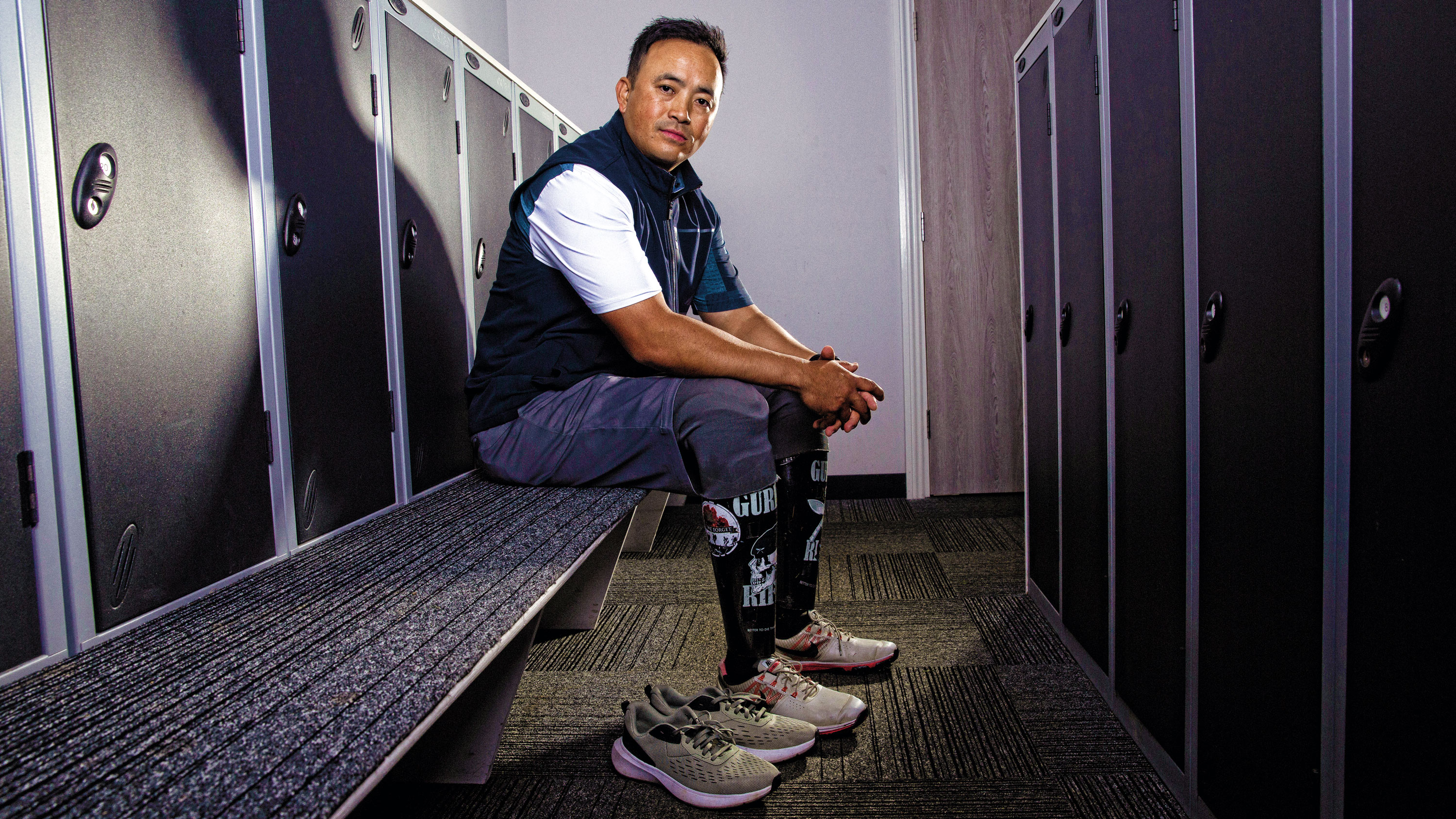
After an early start, I find myself sitting in the clubhouse at The Ridge Golf Club near Maidstone in Kent with photographer Howard Boylan awaiting the arrival of my playing companion. It will be a day of firsts for me: the first time I’ve played this course even though it’s less than an hour from home; the first time I’ve met someone from Nepal; and the first time I’ve played with a double below-the-knee amputee.
I’m feeling abnormally nervous for someone who has been doing this job for 25 years, but Kushal Limbu quickly puts me at ease when he walks in with a warm smile. Soon we’re standing on the first tee as the rain begins to fall steadily and the proposed 18-hole match is hastily shortened to nine. But that doesn’t matter – I’m not really here to write about the golf we played that day but rather about this extraordinary man’s tale of tragedy, rehabilitation, resilience, determination, achievement and more.
For the record, Kushal outdrives me on the 1st (not the only time) and calmly rolls a 60-footer stone-dead on the final hole to seal a 1-up victory. Such gutsiness in a non life-and-death situation comes as no surprise from a man who, during his time as a Gurkha in Afghanistan, faced life-and-death situations that were all too real.
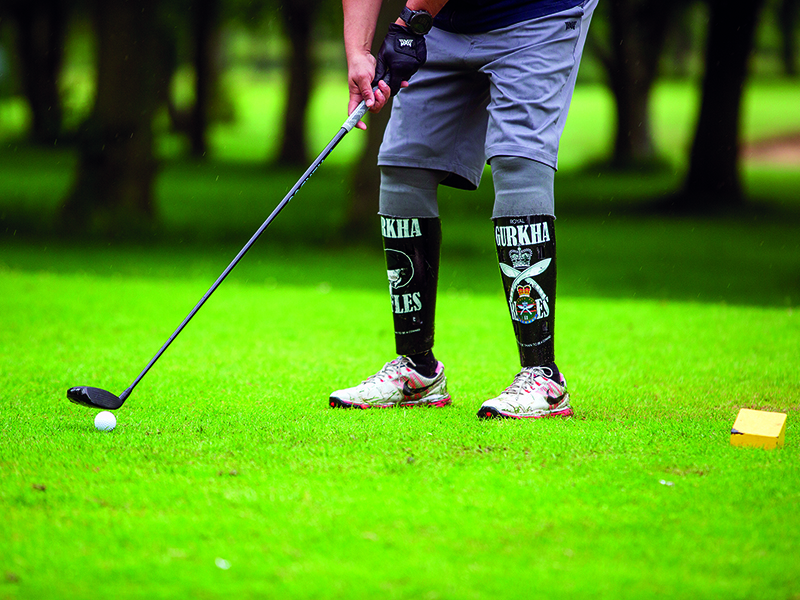
Life-changing moment
Kushal grew up in a military family. His father, uncle and grandfather all served in the Gurkhas and Kushal always wanted to follow in their footsteps. He joined the British army in 2002. Like many, the big appeal was to see the world, with any darker thoughts of what a military career could potentially entail pushed to one side. “I don’t think I thought about that,” he tells me. “You’re just thinking about joining. Once I joined and did my training, obviously I started to understand the reality of what could be or what could happen.”
Tragically for Kushal, what could happen did happen on his second tour of Afghanistan in 2008. He takes up the story of the fateful day that changed his life in his mid-20s: “I’d been there about a month. I was attached to this tank regiment. As we were coming back from a patrol, we were inside the tank and it was blown up by a big pressure-pad IED (improvised explosive device).
“I lost both legs, but unfortunately we lost one of my good friends in that same incident. He was sitting next to me, like you and me are sitting here. I was flown back to the UK the following day and had so many surgeries that I can’t remember how many. I had been married for one year at the time and my wife was still in Nepal. They informed my family about what happened and my wife and dad came over from Nepal three or four days later. I was in the hospital and one day I saw my father and my wife stood by the bedside.”
We pause for a moment as I try to take in the magnitude of what Kushal has just told me in such a calm and collected way. “Yeah, if I think about lying on my bed in the hospital, I didn’t think I would be walking again,” he admits. “I didn’t know about prosthetics at the time. I was completely unaware of how prosthetic legs worked and hadn’t met many amputees in my life, so I didn’t have any idea.
“I think it was the same for my family – they pretty much thought I was going to end up in a wheelchair all the time. But I did my rehab at Headley Court in Surrey for one or two years and that’s where I got my first prosthetic legs. That’s how I started my recovery.”
The modern medical world, while unable to cure all ills or restore all bodies fully, is certainly able to work wonders that can transform a badly injured person’s life. There’s no doubt that discovering the potential of prosthetics brought at least a degree of hope back into Kushal’s shattered world.
I ask what his first tentative steps felt like. “It was quite weird,” he smiles. “I’m not going to go into detail but, basically, they started with a very soft kind of cushion because the wounds were still fresh. I think I tried them one or two months after my incident. I hadn’t been on my feet for two months so it was quite a weird feeling to stand, obviously with the help of the stable bar. But I was very excited because I knew I would be able to walk one day. It was quite amazing, actually.”
Space doesn’t permit more detail of Kushal’s long road to recovery, but suffice to say, it wasn’t too long before he had his sights set not just on walking, but also running, for it was to the more energetic world of sprinting that he first turned before later moving on to golf. “When I had my first prosthetic legs, I started to look on YouTube,” he says. “You know – how things work and the things I could do with my prosthetics. I saw amputees running with blades and decided I wanted to do that because I used to sprint in my school days. Eventually, the prosthetic centre gave me my first running blades and I did my training at Ashford Athletic Club. Obviously there weren’t many amputees, so I trained with the able-bodied athletes, and it was quite fun.
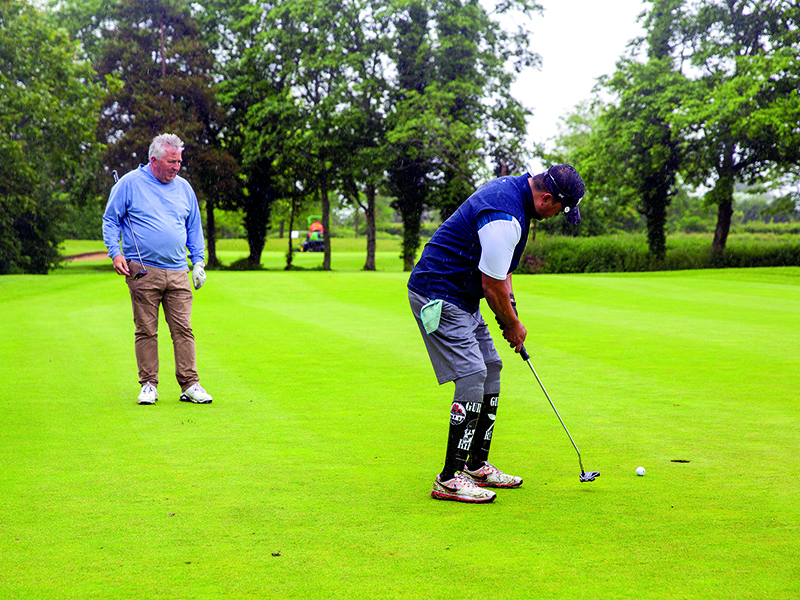
Success on the track
Turns out he was rather good at sprinting with his new legs – in fact, good enough to make Team GB for the 2014 Invictus Games in London and the 2018 edition in Sydney, and good enough “to win a few medals as well” he says with unwarranted modesty. Those few medals included Gold in the 200m and Silver in the 100m in London in the IT1 category (single or double below-the-knee amputees), then Gold in both those events in Sydney, along with medals in both Games in the 100m relay and mixed team sitting volleyball.
As with all sprinters, though, the passage of time eventually catches up with you and you need another outlet to fuel your competitive desire. That’s where golf comes into the story, although Kushal had actually started playing in 2014. “We have few golf courses in Nepal – five or six maybe – and I never played golf,” he tells me. “I never thought I would have played even when I came to the UK. I saw people going early in the morning with their golf bags and used to think I would never play that. But after a few years, I started golf as part of my rehab – one of my recovery officers took ten or 15 injured Gurkhas to a range and asked us to hit some balls. I just loved it.”
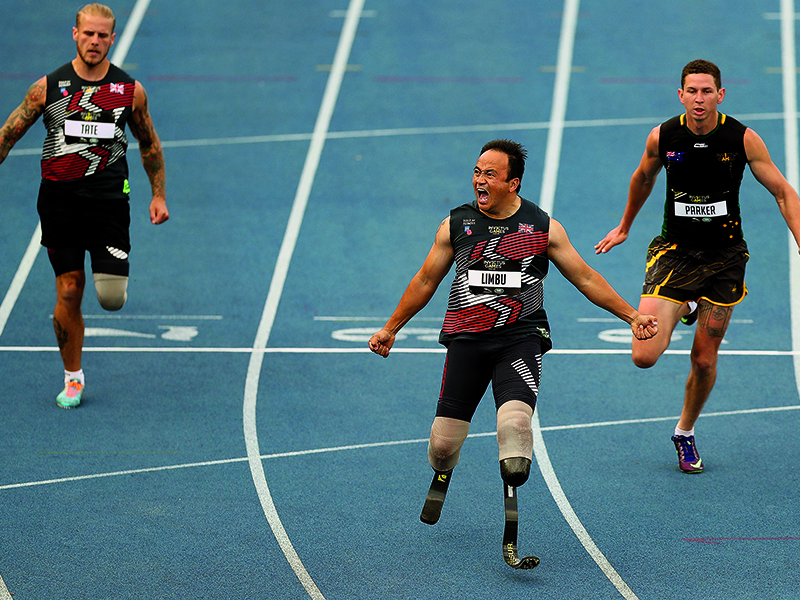
Transition to golf
Progress, as with most things in Kushal’s world it seems, was rapid. “I started with a 28 handicap but didn’t stay 28 for long because I picked it up quite well,” he grins. “I was down to 18 in a few months, stayed there for a while and now I’m down to 9.5, so I’m really proud of myself.” So he should be, for between his two Invictus Games he also fought his way on to the GB team for the 2015 Simpson Cup, an annual 13-a-side tournament between British and American injured servicemen and veterans run by the On Course Foundation.
He has now played in three Simpson Cups and, when we spoke, had his eyes set firmly on this autumn’s event at Shinnecock Hills in New York, telling me he was exempt into the second stage of qualifying at London Golf Club. I ask if he feels confident. “At the moment, yes,” he replies. “I know where my weaknesses are and I’m working on it, so I’m pretty confident. I have a good chance this year, I think.”
And those weaknesses? “Oh, that’s easy – my irons,” is the instant response. “Off the tee is really good, I think, but when it comes to the longer irons, I struggle a little. There’s not much I can generate from my legs obviously. My legs are there to balance my posture. I can use my hips a little bit but my swing is more upper body and arms. I’m quite an arm-dominant person as well, even before my injury. Obviously, I need to counter that, otherwise I tend to hook my irons. If I swing hard, my upper body kind of takes over.”
As I write this two months later I check out the 2024 Simpson Cup team and am not surprised to see Kushal’s name on the team sheet. But how far does he think he can take his golf? “Getting to scratch is the ultimate goal,” he says, “but that will be hard because of the nature of my injury. I’m going to lose some shots somewhere in 18 holes. If you see my swing or my golf game, you might say, ‘Oh, that guy can play a lot lower than 9.5.’ But at some stage during 18 holes, I’ll struggle because of the slopes and the rough, where my prosthetics are going to react differently. My goal would be to get down to 5 or 6 at least. I think I should be able to play to that some day.”
As a parting shot, I ask what he most loves about golf and how big a part it now plays in his life. “It’s a big part of my life,” he enthuses. “I can’t think of my life without golf now. It’s been ten years and I think I’m going to play a lot more in the years to come. Golf is the only thing that unites me with my older friends and lets me compete with them.
“When I’m playing golf, I kind of forget I have prosthetic legs – there’s a freedom I get when I play golf. My friends tell me they appreciate the fact I’m playing to 9.5 having lost both legs. When I hear that from my friends, it gives me an extra boost in life – I’m proud of myself when I hear that.”
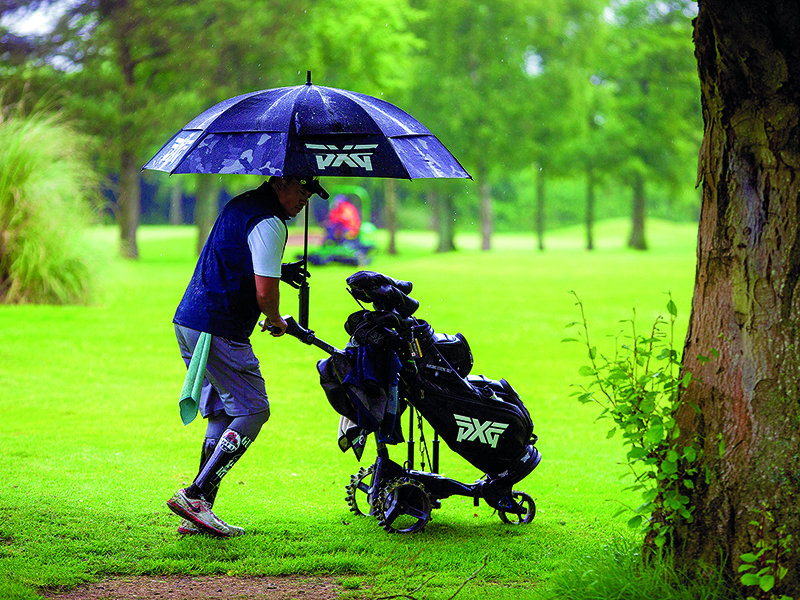
PXG for heroes
The PXG for Heroes programme serves as a thank you to former and current military personnel and first responders, offering special pricing on PXG clubs, apparel and accessories and early access when new clubs are launched. For Kushal, the relationship goes a little further…
How did you come to get involved with PXG for Heroes?
A good friend of mine, Mark, from the On Course Foundation approached me and said they were looking for someone to represent the brand for the Heroes programme. He’d told them, ‘This is the guy you might be interested in.’ They called me and asked if I would be happy to be an ambassador and I was delighted when they said that.
What are your commitments as a PXG for Heroes ambassador?
I do have a few things coming up this year. The deal is that I have to go to certain charity days and play using their clubs and wearing their clothes and talk about how the Heroes programme works.
So you get to try all the new gear?
Yes. Whenever new PXG equipment comes on the market I get to try it and use it for free.
What is your favourite PXG club?
It has to be the driver. Who doesn’t like the driver? I got fitted for the latest Black Ops. It sounds great and I think there’s more distance, so yeah, I like my driver.







